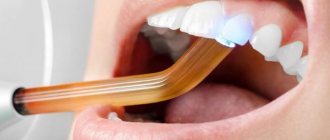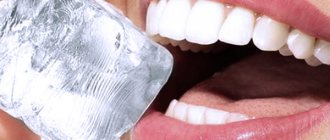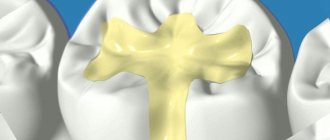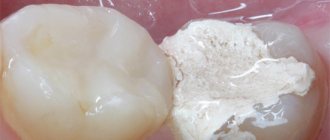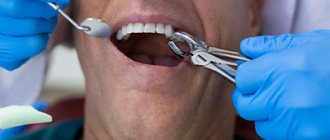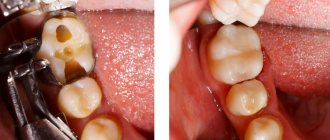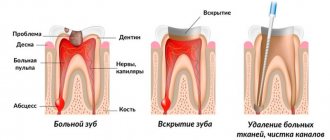Memo to the patient after caries treatment and dental filling.
Today, modern filling materials can last for decades – they are so durable and aesthetically pleasing. However, the service life largely depends not only on professional treatment, but also on the attitude of the patient himself - it is important to have professional teeth cleaning at least once a year, as well as follow some simple recommendations to ensure that the filling lasts as long as possible.
If the filling creates discomfort after treatment
Even in the dental office, after placing the filling, be sure to make sure that the restored tooth does not interfere, i.e. does not overestimate the bite (to do this, you need to create chewing movements of the lower jaw forward and backward, sideways, carefully close your teeth). The filling should not be felt or change the bite. There is no need to be embarrassed to talk about this discomfort to your doctor - sometimes the final stage of filling treatment can take even more time than preparing carious cavities and applying filling material, because The doctor’s main goal is to create multiple contact points between the filled tooth and the antagonist and in no case “turn off” the filling from the bite because this is fraught with changes in the temporomandibular joint.
After treatment, local anesthesia wears off within 1.5-2 hours. If a conductor type was used, then after 4-6 hours. Then you begin to fully feel the restored tooth, you can fully close your jaws and understand how comfortable you are after the treatment.
If you experience a little discomfort, you feel like the tooth is a little higher and your jaw isn't closing quite tightly - this is normal. The fact is that now you have been given a new filling in accordance with the bite, that is, with the shape and position of the antagonist tooth located on the opposite side. Therefore, if there is no sharp pain, be patient for a few days. If the situation normalizes and you get used to it, then there is no reason to see a doctor. If discomfort persists for 1-2 weeks, you should visit your dentist to have the filling corrected.
How much should you not eat after getting a filling?
If a filling made of chemical composites is installed, then you should refrain from eating and drinking for 2 hours. This is due to the fact that the material requires a certain time for final hardening.
If a “light” composite filling is placed, you can drink immediately, but you should abstain from food for 1.5-2 hours. But the reason is not in the material (it hardens a few seconds after applying and polymerizing a special lamp), but in anesthesia - with reduced sensitivity of the mucous membranes during eating, you can injure the mucous membranes of the cheeks and lips.
During the day after the filling is installed, you should only consume foods that are temperature-neutral - excessively hot or cold foods can lead to deformation of the filling. It is necessary to chew food on the opposite side for the first day - this will allow the material to fully “adhere” to the tooth tissues, without the risk of damage.
Why does a tooth with a temporary filling hurt: the main reasons
Often, patients with a temporary filling have a toothache when pressed. In some cases, such a reaction is considered normal. The attending physician will be able to answer for sure why a tooth hurts after a temporary filling after examining the oral cavity and conducting a diagnostic examination. Let's take a closer look at the main reasons for the appearance of pronounced discomfort sensations:
- Impact of the drug. If a tooth hurts with a temporary filling and medication, then most often the source of discomfort is its effect on the tissue. You should contact a specialist if the pain is pronounced and reduces the quality of life.
- Unfinished therapy. Often, after the pain has subsided, a person decides to stop therapy and does not come to an appointment to replace it with a permanent material. Temporary material is not intended to be worn for several years, so sooner or later it will fall out. It is recommended to replace at the appointed time.
- Allergic reaction to cementitious agent. If a tooth with a temporary filling aches and hurts a lot, the reason may lie in an allergic reaction. In such a situation, it would be more advisable to replace it with another cementing agent (depending on the period of wear).
- Lack of material. There is a high probability that it fell out while drinking or eating food, so external factors (irritants) come into direct contact with the soft tissues. An infection could have entered the tooth cavity, causing an inflammatory reaction.
- Prolonged wearing of the cementing agent (longer than the prescribed period). The material is quite fragile; when worn for a long time, it begins to lose its tightness, allowing pathogenic microorganisms (bacteria) to enter the cavity of the molar or premolar.
The biggest cause for concern is discomfort after installation of permanent material. This is an alarming signal that may indicate incorrect installation, untreated pathology, or emerging complications. In this situation, you need to make an appointment with a specialist to determine the main source of pain.
If your tooth hurts after getting a filling
Minor pain may persist for several days or even a couple of weeks, which is explained by overheating of the tissue due to the use of boron, and therefore the preparation is usually carried out with cooling with water. In some situations, for example, with deep caries or when treating front teeth, increased sensitivity can persist even for several months. But in such a situation, you should still consult a doctor for an x-ray to make sure that there is no infected tissue left under the filling and that inflammation has not affected the nerve.
What happens if you ignore a filling?
Some patients do not pay attention to the problem for a long time. This is wrong, as serious complications may arise. If an oversized filling interferes a little, a high load falls on this unit.
- This leads to chronic crown injury.
- Constant high blood pressure causes periodontitis, pulpitis, and there is a risk of chipping the wall of the masticatory organ.
- A one-sided misalignment occurs, the jaw moves to the side.
- It will take some time and the body will get used to it, but the problem will not go away.
- Unusual jaw position often causes diseases of the temporomandibular joints.
Therefore, therapy should begin as soon as discomfort appears. The lower and upper units must be in good contact. This is the only way to ensure complete chewing of food. In this regard, the applied cement should be at an optimal comfortable height. When problems arise, restoration of chewing teeth is carried out. The dentist checks all closure points using a carbon copy, ascertains the patient’s subjective sensations, and makes adjustments.
Can my gums hurt after filling?
The gums in the area where the anesthesia was administered may ache for several days - this is completely normal and does not require any measures. The mucous membrane may also be slightly inflamed if special rings or matrices were used during treatment, which are placed on the tooth to form the correct shape of its crown and create ideal interdental contact. The gums can also be damaged if the doctor applied the filling material in close proximity to the mucous membrane or even under it - in such a situation, the gums are deliberately moved back, the gums are retracted with a special thread or coagulated. Therefore, pain is a normal reaction to external intervention.
All of these conditions are variations of the norm. But if the pain intensifies, redness and swelling of the mucous membrane progresses, you need to consult a doctor.
Should I go to the dentist?
Order in the oral cavity, the absence of diseases and problems is the key to the success of a healthy body. Timely treatment of caries plays a paramount role in this. Darkening of the enamel layer leads to its damage. Dentin also suffers from this. Subsequently, without proper therapy, hard tissues soften, demineralization occurs, and abnormal holes appear. Bacteria provoke this disease, and pathological areas begin to hurt. Treatment for moderate caries takes one visit. Deeper lesions require 2-3 visits.
If a filling interferes with your bite, you should definitely contact a dentist. After all, filling should not harm the patient. The bite should remain correct, the jaws should close normally. When problems arise, the dentist:
- grinds the protruding surface of the cement;
- if the overlay is still in the way, it is adjusted;
- when the optimal position is reached, the insert is polished;
Patients feel even one millimeter of excess glue like a foreign body in the mouth. This is where the discomfort comes from. You should make an appointment with a doctor if you notice a sharp edge that injures the soft tissues of the oral cavity, in particular the gums, cheeks, and tongue. This means that the filling material is not polished enough, there is a gap, a crack, or a step between the crown and the cement. In such a situation, there is a risk of accumulation of microbes and plaque in the rough zone. Over time, a carious lesion will form in this area. To prevent this from happening, the dentist will prevent anomalies and serious negative consequences.
How to properly perform hygiene procedures
After treatment, brush the filled tooth carefully, applying minimal pressure to it. Do not use rinses containing abrasive substances and alcohol, which can increase the plasticity of the material - this will lead to a change in the shape of the filling. Also, do not use overly hard brushes - they can leave microcracks in the material, which will not have the best effect on the durability of the filling.
In general, you should take care of teeth with fillings in a completely standard way:
- daily brushing of teeth twice a day - in the morning after breakfast and in the evening after all meals, after - rinsing the mouth with water and rinse,
- To clean the area of filled teeth after eating, it is better to replace dental floss with an irrigator. If you floss (thread) carelessly, you can touch the installed filling, especially if there are thin edges of the tooth, which will lead to its chipping or loss.
What to do
There are several ways that a new filling can cause discomfort. Among them:
- Wrong size. It may be too big or small for the tooth.
- Poorly installed and polished filling. The filling material protrudes from one side of the tooth, causing additional discomfort.
Any of these problems can lead to further tooth decay. It is better not to try to correct the situation on your own, but if you notice the first symptoms, immediately contact your dentist.
The doctor must properly sand the filling material. The adjustment will take a maximum of 5-10 minutes.
Some people are in no hurry to seek help from a specialist because they mistakenly believe that the filling itself will wear off over time and stop causing discomfort. But the modern material that dentists use is more durable. A high-quality filling will shrink and begin to wear off only after a few years.
Is it necessary to follow a diet after caries treatment?
From the diet as a whole after caries treatment (especially if a large filling is installed and your own tooth has very thin walls), it is recommended to remove too hard foods - toffees, chewing gum, grilled fruit, nuts, etc. Or chew them with teeth located on the opposite side (if they do not have fillings).
Minimize the amount of consumed foods and drinks that contain coloring pigments (tea, coffee, beets) - under their influence, the filling material may slightly change its shade. This rule is especially relevant when restoring front teeth.
Reasons for changes in bite after installation of a filling
There are several factors that provoke changes in the bite after a filling:
- excess filling material, which provokes overestimation of the tooth and unclear formation of its working surface;
- lowering of the tooth due to too intense grinding;
- progressive periodontitis, causing mobility of treated teeth;
- displacement of adjacent teeth after extraction and filling;
- absence of a layer between the filling material and the pulp - when chewing, the dental nerve is constantly irritated and a deceptive sensation of a filling defect is created.
How to maintain your treatment guarantee
To maintain the guarantee, the patient must strictly follow all recommendations: do not overload the tooth, do not use it for other purposes (for example, opening beer bottles, biting off threads), and also regularly see the doctor in accordance with the individual schedule of medical examinations, approximately once every six months. Unfortunately, many patients forget about this, and it is the last point that is the key to maintaining the guarantee for treatment.
You need to visit a doctor 1-2 times a year. During a preventive examination, the dentist will be able to make sure that the filling is in good condition, and that secondary caries does not develop again under it.
Check yourself: when to see a doctor
If a tooth hurts 2-3 days after the filling is placed, and the pain noticeably intensifies when pressed at night, this may indicate a relapse of caries and damage to the dental nerve. If black spots are visible under the filling several months after treatment, the filling interferes with the closure of the jaws or there is prolonged pain when pressing on the tooth. Do not ignore these symptoms and do not be afraid - this is a reason to contact your attending physician - all work must be carried out within the framework of the guarantee of the medical institution. Timely treatment is the key to the health of your teeth!
Symptoms
Visiting the dentist and getting dental treatment is accompanied by unpleasant sensations and discomfort. Pain can and should be present after therapeutic measures. But it goes away after a short period of time.
If pain persists, then under no circumstances should it be ignored. They will lead to the development of inflammatory processes. The result is a damaged tooth.
Signs of an incorrectly installed seal include:
- Inability to clench or clench teeth. It feels like the filling is too high and protrudes above all the teeth. Therefore, when chewing or moving the jaw, there is a feeling of a foreign object in the mouth.
- A feeling of pain that intensifies when chewing. It occurs due to both over- and under-inflated fillings.
- Sharp or overhanging edges. The filling may have a tight fit to the bite, but at the same time cause injury to the gums or tongue. These injuries can lead to the development of stomatitis.
- Permanent injury to the papilla. This is caused by incorrect actions of the dentist, who did not preserve the interdental gaps during treatment. As a result, it becomes difficult to brush your teeth and your gums begin to bleed.
The norm is the presence of discomfort and pain in the first 3-4 days after dental treatment. Everything should go away on its own after this period. But if the discomfort persists, then you should immediately contact your dentist so that he can eliminate this problem. Most often this takes a few minutes and does not require additional intervention.

